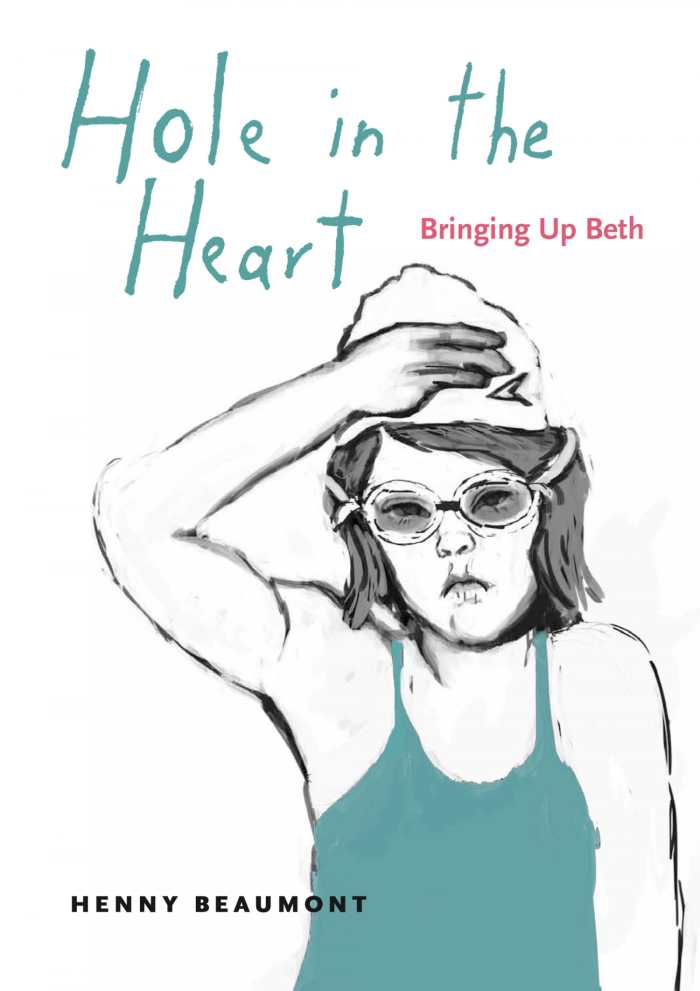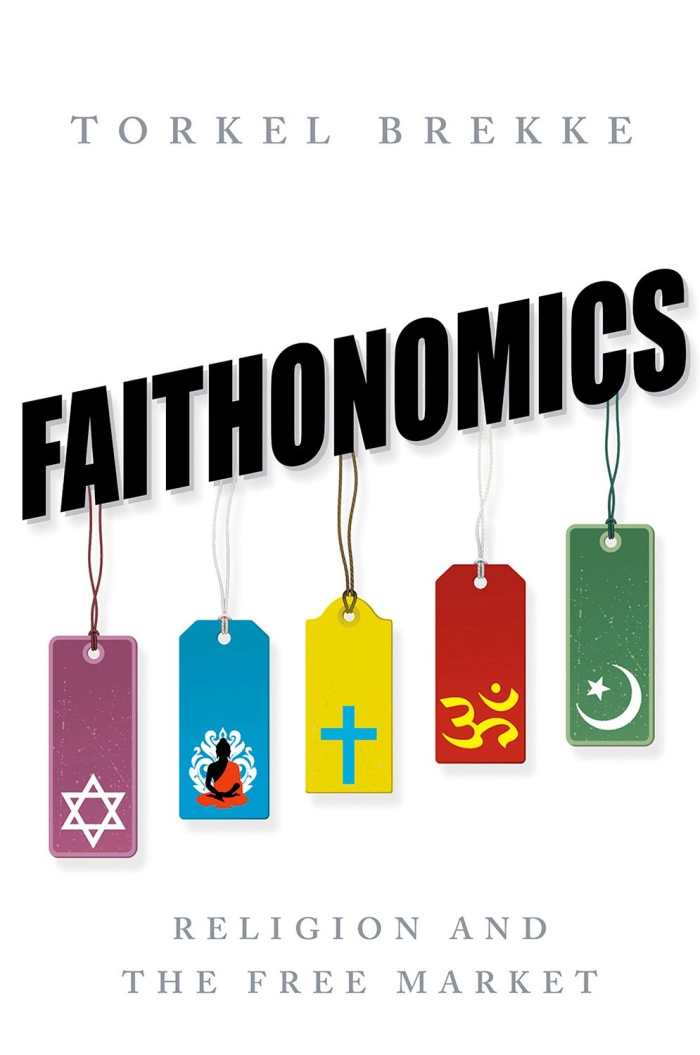New Books This Week: Recommendations

Each week, bookstore and library shelves are bombarded with new releases. This week, a handful of books we loved will be reaching readers. Our picks of the week include a medical graphic novel, a book about the crossroad where faith and finance meet, and an effecting piece of translated fiction.
Hole in the Heart
Bringing Up Beth

Henny Beaumont
Penn State University Press
Softcover $24.95 (288pp)
978-0-271-07740-6
Buy: Local Bookstore (Bookshop), Amazon
Hole in the Heart: Bringing Up Beth, part of Penn State’s Graphic Medicine series, is artist Henny Beaumont’s brutally honest, and ultimately uplifting, account of raising a daughter with Down syndrome.
“Hole in the heart” refers to a common heart abnormality in children with Down syndrome, one which Beth, Beaumont’s daughter, has surgery to correct. But the title also refers to the battle for Beaumont and her husband to truly understand and embrace their daughter as she is; from the beginning, they often attempt to ignore or work around Beth’s limited abilities, while experiencing a gamut of emotions: guilt and sadness, hope and frustration, and, eventually, acceptance and love.
Beaumont has an MA in fine art and printmaking, and she transitions that experience to sequential art particularly effectively. The narrative flows easily, and when Beaumont chooses to slow it down, the results are gut-wrenching, as with an imaginary “visit” from Beaumont’s 15-years-older self, as the elder woman tries to impart perspective and patience to the younger one. The facial expressions of Beaumont’s characters show everything from sympathy to embarrassment to condescension, as Beaumont and her husband struggle to make good choices for Beth regarding schools, activities, and friends.
Hole in the Heart is a deeply affecting graphic novel that will certainly light a path, if not the only path, for other parents of children with Down syndrome. But it might be even more important for those with no experience of Down syndrome, to help gain an understanding of how the genetic disorder affects not just the child, but the child’s entire family. No matter the audience, the book’s message is universal.
PETER DABBENE (August 26, 2016)
Faithonomics
Religion and the Free Market

Torkel Brekke
Oxford University Press
Hardcover $29.95 (256pp)
978-0-19-062769-0
Buy: Local Bookstore (Bookshop), Amazon
This is a unique, refreshing, and even hopeful look at the interplay between faith and government.
Faithonomics: Religion and the Free Market, by Torkel Brekke, makes the argument that the absence of government involvement is best for religions. As the free market leads to balance for the economy, according to Brekke, so too would a free market for religion open the way for stability and keep extremism from thriving.
The book begins by examining how religion functions in today’s market environment, asking intriguing questions like “What’s the difference between going to church and getting a haircut?” and calling the American and French governments to account for believing they are neutral toward religion when they really are not. Then, Brekke delves into the history of major world religions, showing how centuries of religious and government interaction have created today’s contentious climate. Finally, the work presents seven examples of ways that today’s governments favor, discriminate, or otherwise regulate religious groups, showing in each instance how such practices have unforeseen and negative consequences.
These arguments are supported using the study of history, modern-day religion, economic principles, and sound logic. The book is neither antireligious nor antigovernment; it simply presents the effects of the interactions between the two entities. The incorporation of the notion of a “free market” suggests that, like other products and services, religions can best be regulated in the manner of a free exchange, rather than through government control or privileges.
Though the book relies upon strong academic research, its tone is plainspoken and clear, resulting in an excellent balance of insightfulness and concision. Its conclusions will be most applicable to religious and governmental leaders, whom it can help to see beyond the haze of privilege, regulation, and control, to instead focus on new possibilities.
This clear-minded approach to understanding religions helps to clarify some of how today’s world became so fraught with religious extremism, and what can be done about it. A basic familiarly with economic principles is helpful, but Brekke gives people across disciplines the background they need to apply the principles within to the topics at hand.
Faithonomics takes a unique, refreshing, and even hopeful look at the interplay between faith and government.
MELISSA WUSKE (August 26, 2016)
Two Gentlemen on the Beach

Michael Köhlmeier
Ruth Martin, translator
Haus Publishing
Softcover $24.95 (238pp)
978-1-910376-46-1
Buy: Amazon
This affecting, dimensional work centers on the power gained by losing oneself in the mythology of others.
Charlie Chaplin and Winston Churchill: Englishmen, twentieth-century icons, and, in Austrian writer Michael Köhlmeier’s rich imagination, allies joined across continents by their suicidal ideas. From this original premise comes Two Gentleman on the Beach, a novel translated by Ruth Martin that threads encounters between the film artist and the statesman together as they attempt to pull each other out of darkness.
Conversations on childhood memories lay the groundwork for their macabre kinship, while portraits of Hollywood splice with politics, biographical details, and pure invention. A nameless narrator—who is a clown by profession—bases the account on correspondence between his father and a member of Churchill’s inner circle, an interview between Chaplin and a journalist, and other fictional sources. The result is a measured drama that sets the story of the reviled, revered men against the narrator’s archival search for meaning.
Highlights include Chaplin’s near-manic state while cutting his film The Circus. As the actor studies himself, the fear of being consumed by the role of the Tramp builds with grim intensity, and the scene is brilliant in the way that it captures the pain of perfectionism. Later events, set during the rise of Hitler, turn increasingly absurd as Chaplin’s work on his satire The Great Dictator moves alongside Churchill’s own private war. The mixture of psychological fragility, truth, cinematic history, and subterfuge is as intriguing as it is unrelenting.
While the pairing of Chaplin and Churchill is fascinating enough as an exploration of the divide between public and private personae, it’s the narrator who intrigues most. A man who plays his cards close to his chest, and who absents himself for long stretches only to later return, his voice creates tension. It’s never entirely clear how much of the narrator’s retelling is a form of distraction and self-preservation—perhaps a way to identify with Chaplin’s artistry, and with Churchill’s despair—and how much is an act of homage, but the enigmatic approach is befitting of the men who inspire it. Two Gentleman on the Beach is an affecting, dimensional work on the power gained by losing oneself in the mythology of others.
KAREN RIGBY (August 26, 2016)

Seth Dellon is director of audience development at Foreword Reviews. You can meet him or hear him speak at most of the events Foreword attends, and contact him at seth@forewordreviews.com.
Seth Dellon
